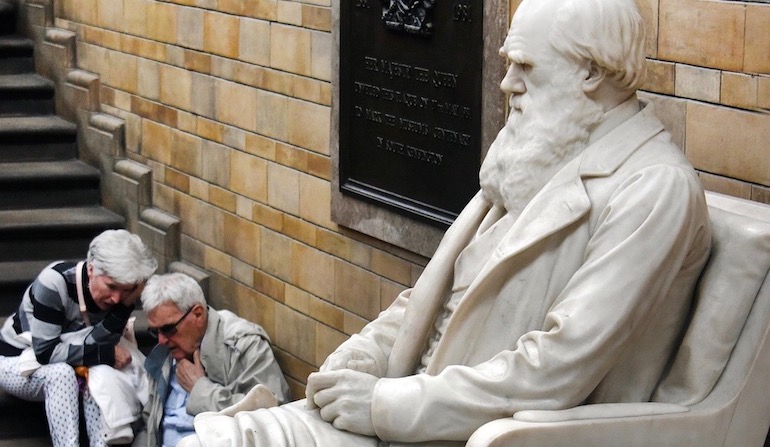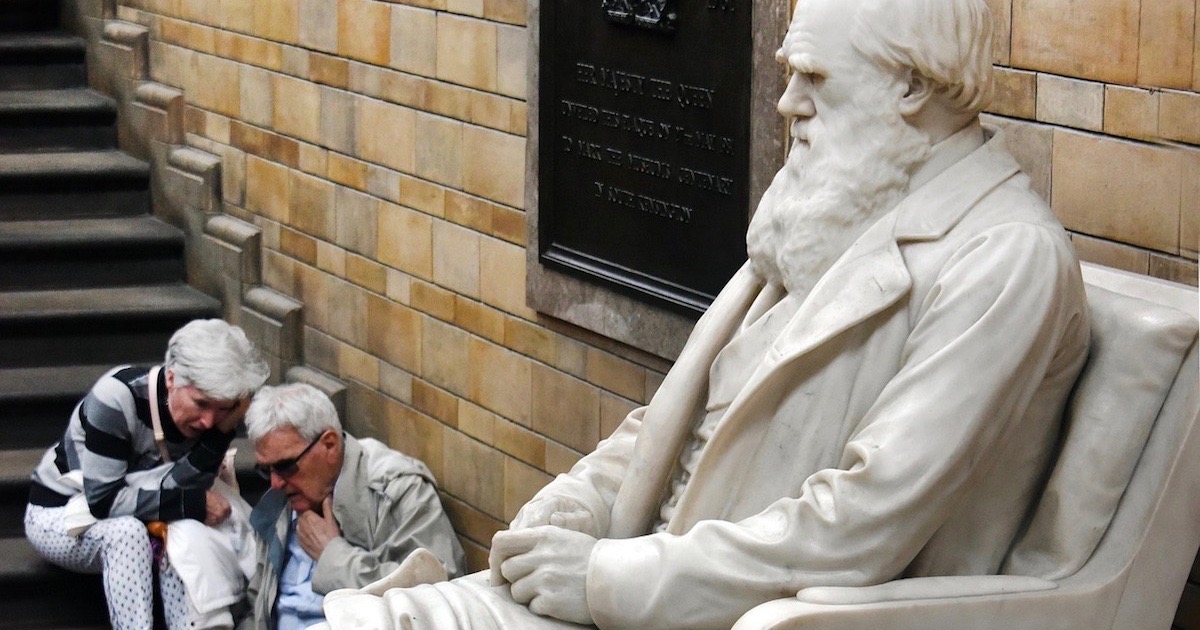 Evolution
Evolution
 Intelligent Design
Intelligent Design
For This Physicist, “Overthrowing” Darwinism Is on the Table


Ethan Siegel is a physicist who writes a pretty consistently interesting regular blog for Forbes. Yesterday he offered thoughts on “How To Overthrow A Scientific Theory In Three Easy Steps.” He concedes, “Even our best theories of today may be superseded with tomorrow’s science.”
And no one, except perhaps some ultra-Darwinists, would disagree. He notes that theories have limits:
Any theory, no matter how successful, has a finite range of validity. Stay within that range and your theory works very well to describe reality; go outside of it, and its predictions no longer match observations or experiments. This is true for any theory you pick. Newtonian mechanics breaks down at small (quantum) scales and high (relativistic) speeds; Einstein’s General Relativity breaks down at a singularity; Darwin’s evolution breaks down at the origin of life. [Emphasis added.]
That last point is the theme of Stephen Meyer’s first book, Signature in the Cell. Siegel’s three steps are actually four:
- Step 0: recognizing successes and failures of the leading theory.
- Step 1: reproducing all the successes of the leading theory.
- Step 2: succeeding where the prior theory did not.
- Step 3: you must make new, testable predictions that differ from the original theory’s.
Whether proponents of intelligent design have succeeded in any of those is a question you could debate. But it’s beyond doubt that they are trying, in a rigorous manner, to advance through each of those steps. It is striking that Darwin defenders typically refuse to acknowledge that or to address the science of ID. They are mostly content with name-calling.
The Hunt Is On
The ID research community isn’t alone, of course, as Sarah Chaffee mentioned here. The hunt is on for a successor to Darwinism:
Scientific controversy over evolution exists, quite apart from proponents of intelligent design. Think of the researchers associated with the Third Way of Evolution and the 2016 Royal Society Conference and its subsequently published journal. Problems with conventional scientific explanations for the origin of life and of biological diversity are widely acknowledged — and scientists around the world tackle these issues.
This means, in any event, that ID is a rival theory, a scientific theory, doing the normal work that scientific ideas must do to supplant a currently dominant idea. That’s not to say that ID will succeed. But to brand it is as a “religious” rather than “scientific” idea is plainly false.
The Right Stuff
Siegel addresses what it would take to succeed:
Want to go beyond Darwin’s evolution? You still need to explain the emergence of biological diversity, the response to selection pressures, and how inheritance works, among others.
That, again, is something that no ID advocate would disagree with. “[E]xplain[ing] the emergence of biological diversity,” the theme of Meyer’s second book, Darwin’s Doubt, is precisely where the ID argument tackles Darwinism most forcefully. It’s a way of thinking that led Alfred Russel Wallace to his break with Charles Darwin, as Michael Flannery tells in his new book.
Don’t get me wrong. I don’t see any indication that Ethan Siegel has a drop of sympathy for design theory. But recognizing how and where the “overthrow” of Darwinian evolution could happen, if it were to happen, is a step in the right direction. It puts our question on the table.
Photo credit: ddouk, via Flickr.
